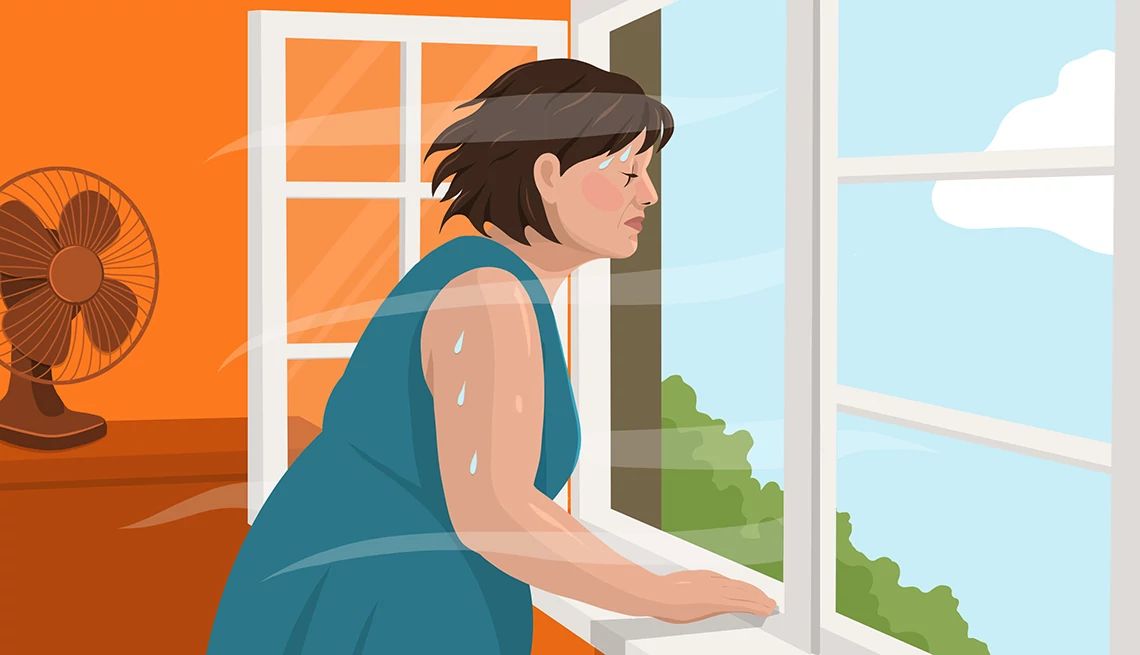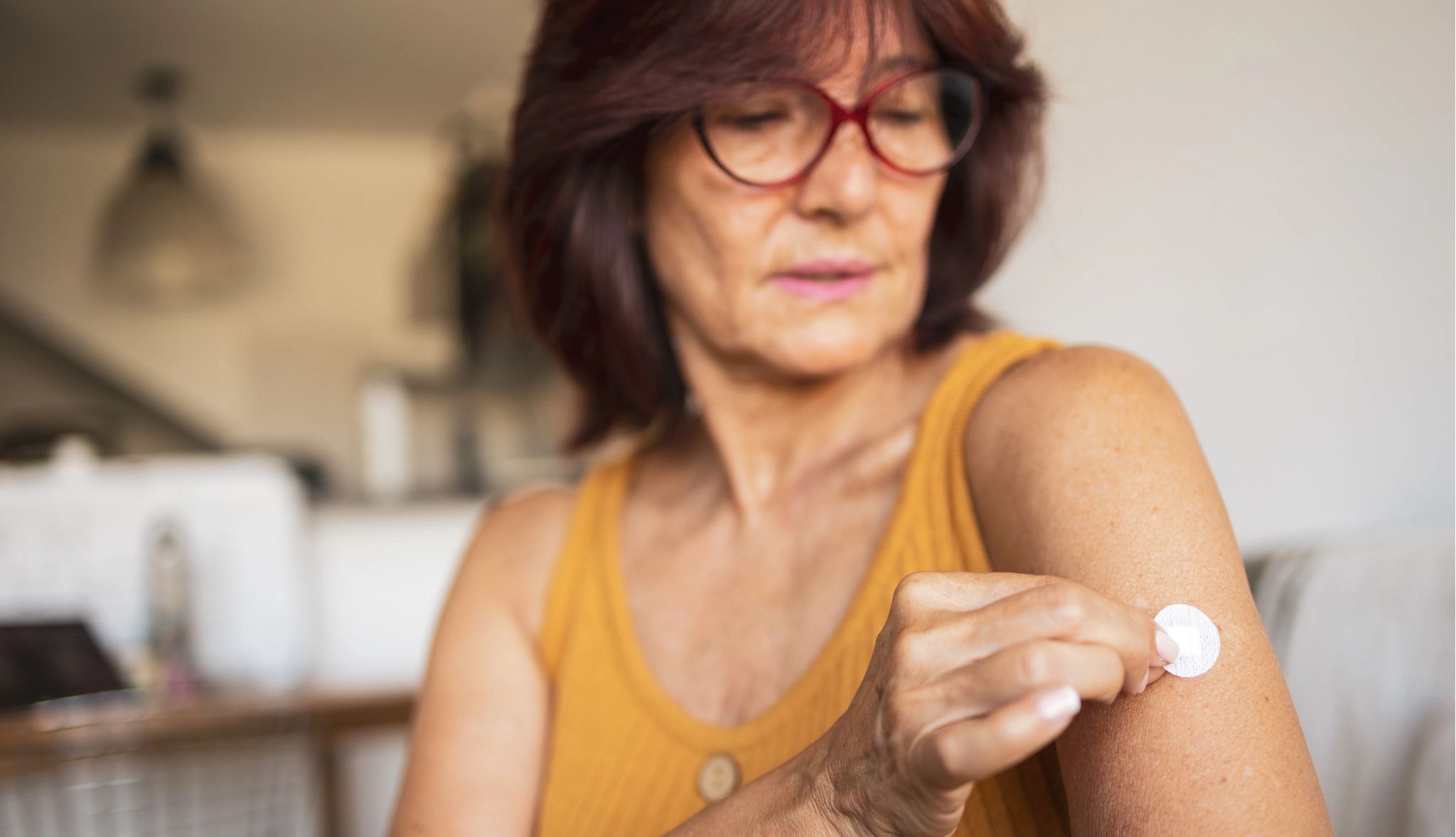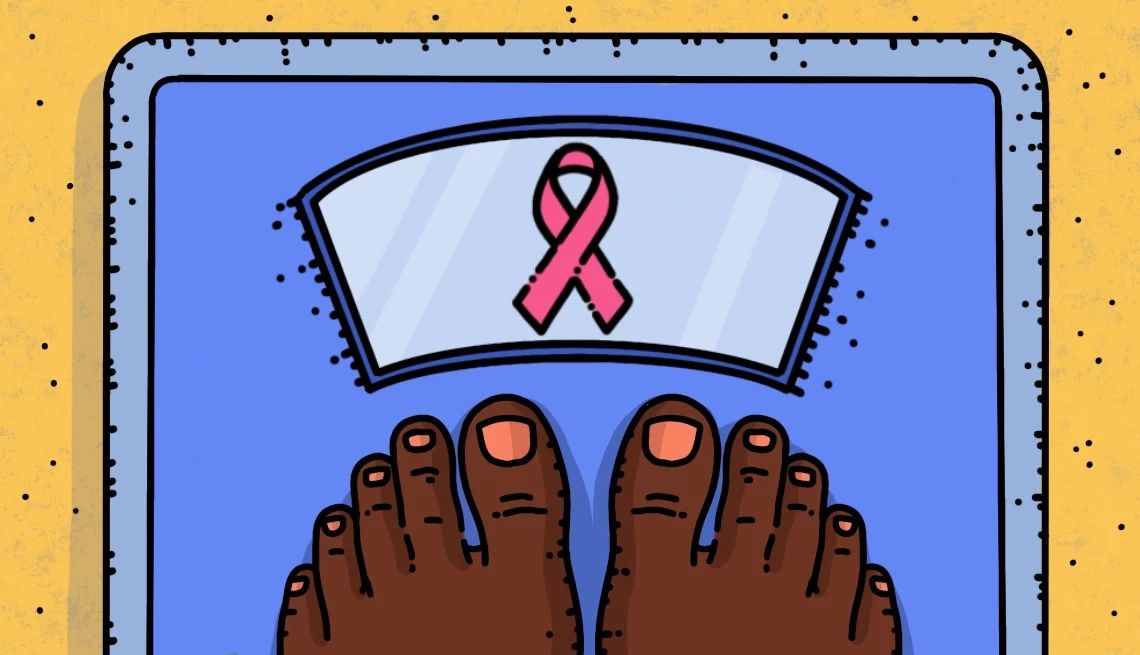AARP Hearing Center


Health officials on Nov. 10 announced plans to remove boxed warning labels from packaging on hormone therapies used to treat menopause symptoms — a change that experts say could encourage more women to seek care for debilitating hot flashes and other symptoms.
Since 2003, these labels have warned that hormone therapy may raise the risk of certain cancers and cardiovascular problems. But women’s health experts say that those dangers have been overstated and that for many women the benefits of treatment outweigh the risks, especially in the early years of menopause.
The Food and Drug Administration will work with companies to update labels “to remove references to risks of cardiovascular disease, breast cancer, and probable dementia,” according to a news release from the U.S. Department of Health and Human Services. For systemic estrogen-alone products, the FDA won’t try to remove warnings for endometrial cancer, the release says.
The changes will affect labels for so-called systemic therapies, like estrogen pills and patches, as well as labels for lower-dose vaginal products.
“The modifications to certain warning labels for estrogen products are years in the making, reflecting the dedicated advocacy of physicians and patients across the country,” Dr. Steven J. Fleischman, president of the American College of Obstetricians and Gynecologists (ACOG), said in a statement.
“The updated labels will better allow patients and clinicians to engage in a shared decision-making process, without an unnecessary barrier, when it comes to the treatment of menopausal symptoms,” Fleischman said.
Health officials said that the boxed warning label on hormone therapies has confused women and even deterred them from treating symptoms like hot flashes and vaginal dryness. Research from AARP, published in 2024, found that only 15 percent of women surveyed had tried hormone therapy for menopause symptoms, while nearly half of the women treated their symptoms with supplements.
Many women today find themselves “in the Wild, Wild West,” says Rebecca Thurston, director of the Center for Women’s Biobehavioral Health Research at the University of Pittsburgh.
They may be getting information from unreliable online sources or from medical professionals not following the latest science, she says, which fuels confusion about what hormone treatments can and can’t do and what the risks and benefits are.
Here’s what you need to know about hormone therapy for menopause, including the risks, benefits and questions you should be asking your doctor.
Hormone therapy’s complicated history
Hormone therapies are prescribed to replace the estrogen the body stops making after menopause and can help some women with common menopause symptoms, such as hot flashes and vaginal dryness. In the ’80s and ’90s, Thurston says, “we used to think that hormone therapy was great for all that ailed you, from your skin to your bones to your heart to your brain.”
Then, in 2002, initial results from a large Women’s Health Initiative (WHI) study punctured that balloon. The study, which included postmenopausal women ages 50 to 79, found that hormone pills raised risks of heart disease, stroke, blood clots and breast cancer while offering some protection from bone loss.
“What we learned in the Women’s Health Initiative was that women who started hormone therapy at an average age of 63 had more risks than benefits,” says Dr. JoAnn Pinkerton, a professor of obstetrics and gynecology at the University of Virginia.
The study was mostly designed to see if hormones could prevent diseases, not if they could safely treat symptoms like hot flashes, which are most common in the early menopausal years. That’s “a completely different question,” says Dr. JoAnn Manson, a leading WHI researcher and a professor of medicine at Harvard Medical School.
Subsequent research shows that using hormones to treat symptoms in early menopause can be a reasonable choice for many women, she says. And yet, women and many of their doctors haven’t gotten that message, says Dr. Stephanie Faubion, medical director of the Menopause Society, a group representing medical professionals who treat menopausal symptoms, and director of the Mayo Clinic Center for Women’s Health.
A study published in JAMA Health Forum in 2024 found that just 4.7 percent of postmenopausal women used hormone therapy in 2020, down from 26.9 percent in 1999. Newer unpublished data show even lower use, Faubion says.
“Any way you look at it, there are very few women in the United States actually receiving hormone therapy,” she says. That means many are “undertreated,” she adds, for bothersome, disruptive symptoms.
































































)


















More From AARP
7 Supplements for Joint Pain
Are your joints feeling a little creaky? These joint supplements may help ease pain
Should You Take a Fish Oil Supplement?
People take it to protect their brain, joints and heart. But does it live up to the hype?
Could This Mineral Be the Answer to Insomnia?
Magnesium is a potential remedy for sleepless nights